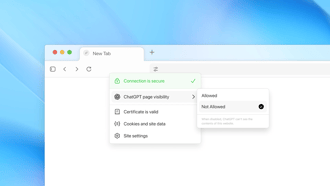Improving AI accuracy can be achieved in part by using part-of-speech tagging within natural language processing (NLP). NLP is a field of artificial intelligence that helps enable computers to understand, interpret, and generate human language. Part-of-speech (POS) tagging in NLP involves assigning each word in the text a grammatical category, such as a noun, verb, or adjective. CloudFactory explores how POS tagging can help enhance the accuracy of AI models and reduce ambiguity.
What is part-of-speech tagging?
NLP involves the interaction between computers and human language, with applications like voice-activated digital assistants, translation apps, and email spam detection. To ensure these applications work accurately, NLP uses information extraction and various techniques that help increase precision. One of the main methods is part-of-speech tagging, which is a process that identifies the grammatical role of words.
POS tagging assigns different tags to each word in a sentence or text. Some of the most common part-of-speech categories in the structure of a sentence include:
- Noun: This is a person, place, thing, or idea.
- Verb: This describes an action or state of being.
- Adjective: This is used to describe a noun.
- Adverb: This modifies a verb, adjective, or another adverb.
- Proper noun: This is a specific name of a person, place, or thing.
- Interjection: This is an exclamation.
- Preposition: This precedes a noun or pronoun.
- Determiner: This determines the kind of reference a noun or noun group has.
Each part of speech in a sentence has a particular role and conveys a specific meaning. By assigning each word a tagset, AI models are able to determine the role that a word plays. This helps increase the AI model’s semantic understanding and disambiguation of words, improving its accuracy.
How does part-of-speech tagging work?
There are different parts of speech and therefore various types of POS tags, depending on what they’re based on. If they’re universal, the tags aim for cross-linguistic consistency. Noun is noun, verb is verb, adjective is adj, etc. Tags can also be based on Treebank POS, like the Penn Treebank POS. These tags are language-specific and more detailed, with the English tags for nouns being NN, verbs being VB, and adjectives being JJ.
There are several methods of POS tagging, with each approach having its advantages and disadvantages. They include:
Rule-based approach
The rule-based POS approach involves using predefined rules to assign tags. The predefined rules are manually created with guidelines for labeling each word based on its characteristics and context. These rules are typically established on the morphological and syntactic properties of the word, such as the suffix, prefix, and surrounding context. By using these rules, the model can determine the part of speech of a given word.
Rule-based methods can be very accurate for well-formed and grammatically correct texts, but they can have difficulty with out-of-vocabulary (OOV) words. OOV words are those that are not in the training data. They can also struggle with poorly written or flawed text. Rule-based taggers are typically straightforward to develop and maintain, since they utilize a set of predefined rules. However, it can be complicated to scale them.
Statistical approach
The statistical or stochastic approach to POS tagging uses statistical models to predict a word’s most likely tag. They use machine learning algorithms to learn the patterns and features that determine a word’s part of speech from a vast annotated training corpus. By training with annotated large language model (LLMs) datasets, these AI models can then make predictions on unseen data.
Statistical POS taggers can be very accurate and are able to handle text with OOV words and errors more effectively than rule-based methods. However, they can be complex to train and develop because they need a large, annotated training corpus.
Hybrid approach
A hybrid POS tagging approach utilizes elements from both rule-based and statistical methods. They often use predefined rules and ML algorithms to perform POS tagging, leading to high accuracy. Hybrid approaches can handle text with OOV words and mistakes effectively, but they can be challenging to develop because of their need for a large training corpus.
No matter what POS tagging method is used, there can be challenges with achieving high accuracy and handling linguistic ambiguities. This is because some words can have multiple potential POS tags, depending on the context of the sentence. The accuracy level can also vary depending on the quality of the training data and how complex the task is. When deciding which POS tagging method to use, the specific requirements and constraints of the task will have to be considered.
The importance of accurate POS tagging for AI models
POS tagging is used in several NLP applications, including sentiment analysis and machine translation. Sentiment analysis involves computationally identifying sentiment-laden words and their relationships to nouns or verbs to determine the writer's attitude toward the topic. Language translation provides context for precise word-to-word mapping between languages. To perform these NLP applications accurately, POS tagging is used to help the model understand the grammatical structure and semantic meaning of text.
When POS tagging is precise, the AI models can understand how individual words relate to each other in a sentence. This contributes to the overall performance of AI systems by:
- Facilitating human-computer interaction that is more natural and effective.
- Serving as a foundation for more complex NLP techniques like semantic role labeling and dependency parsing.
- Increasing AI model accuracy by improving NLP tasks and their understanding.
CloudFactory's human-in-the-loop approach to data annotation
For POS tagging to accurately assist with NLP tasks, the POS models need to be properly trained. When using statistical and hybrid POS tagging approaches, the model requires an annotated training corpus to learn from. CloudFactory provides accelerated annotation from our advanced data annotation platform to deliver superior-quality training data. We do this by combining AI-powered automation with human expertise.
Our human-in-the-loop (HITL) labeling solutions use a human workforce in conjunction with AI and ML systems to increase their reliability and accuracy. This occurs because humans can help prepare data for annotation, ensuring that the nuances are completely understood and the data will be correct. By combining AI automation with a HITL workforce, you get the quality, speed, and scale that your data and AI models need to be accurate and successful.
Case studies: success stories with CloudFactory
At CloudFactory, we’re proud to help enterprises improve their NLP projects with our data annotation services. Some successful case studies include:
True Lark
True Lark is an AI communications platform with a virtual business assistant, Sasha, that is trained to answer patient questions, book appointments, and more. True Lark needed to train their virtual business assistant to become more conversational, which requires labeled data. CloudFactory helped True Lark by using our text annotation services to annotate massive volumes of customer conversations, helping to train Sasha to provide powerful automated experiences. This customer service automation has helped the True Lark AI team focus on other pressing responsibilities, letting them drive AI model innovation and rapid productization.
Heretik
Heretik is a legal machine learning company that helps review contracts using AI models. These models need to be trained on labeled documents, so Heretik turned to CloudFactory for help with document annotation. By using a HITL team to annotate these documents, the time it takes to prepare data has been reduced by more than half. This allows the Heretik team to speed up product development, helping them see success.
For further insight into how CloudFactory’s annotation services help enterprises succeed, read through our client testimonials to explore the effectiveness of our solutions.
Future trends in POS tagging and NLP
As POS tagging and NLP models continue to advance, different technologies and methodologies will emerge. One of these is neural network-based POS taggers, which have resulted from the advances in deep learning. These taggers use recurrent neural networks (RNNs), which are ideal for capturing sequential dependencies in text. They are trained on large amounts of annotated data and are often computationally intensive, but they offer state-of-the-art accuracy on many NLP tasks.
These neural network-based POS taggers are just one future trend that will become increasingly popular in POS tagging and NLP. Human expertise and HITL solutions will also continue to be used to advance AI accuracy, as they provide the syntactic structure, contextual understanding, and interpretation abilities that AI models don’t possess.
Access HITL AI solutions at CloudFactory
If your business could benefit from data annotation services, which help increase the accuracy of NLP models, turn to CloudFactory. Our accelerated annotation solutions and HITL workforce combine to elevate your business’s AI efforts. For more information about how we can help with POS tagging or improving NLP model accuracy, request a demo or tutorial today.
.png?width=1563&height=1563&name=Untitled%20design%20(38).png)




.png?width=1563&height=1563&name=Untitled%20design%20(30).png)



.png?width=1563&height=1563&name=Untitled%20design%20(33).png)


.png?width=1563&height=1563&name=Untitled%20design%20(34).png)













